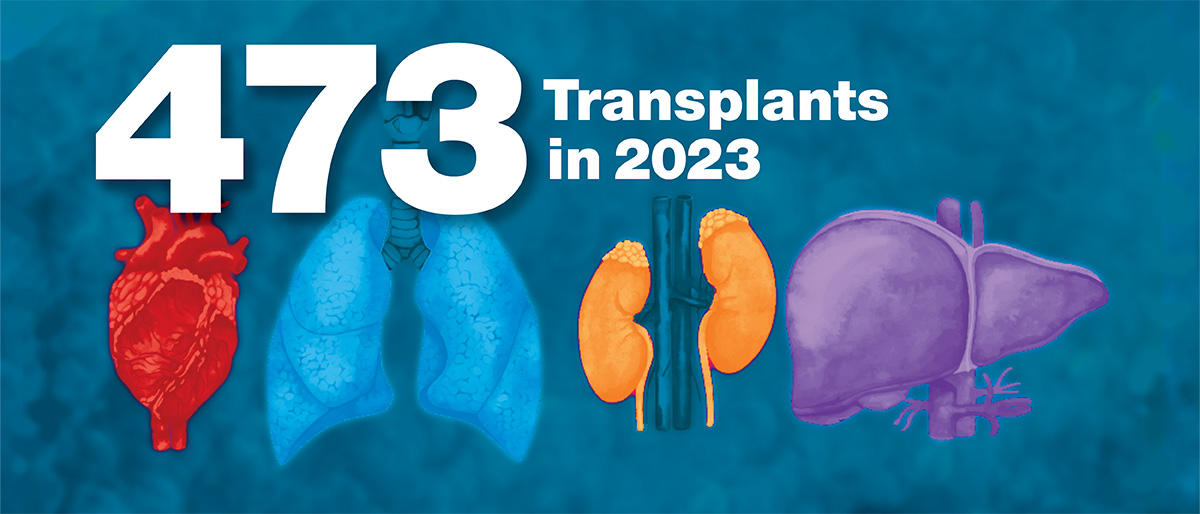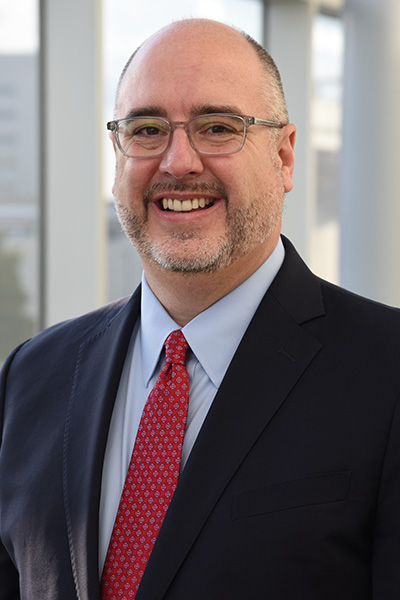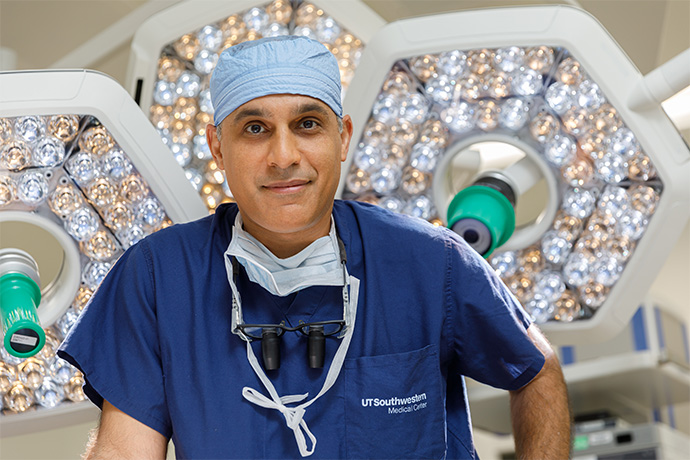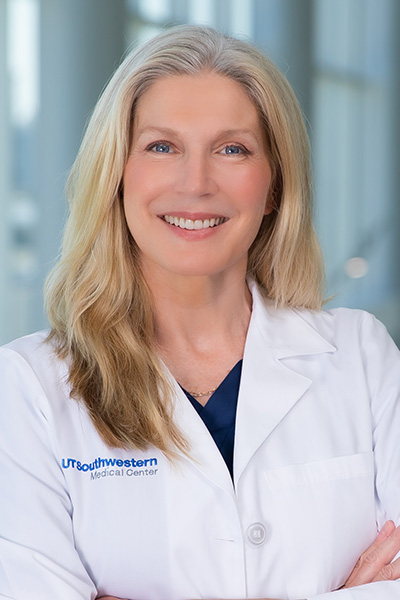Hundreds of lives saved as UTSW Transplant Program reaches new heights

UT Southwestern’s Transplant Program made huge strides in 2023, saving lives and celebrating milestones that decades ago would have been unthinkable. Organ transplants numbered 473, the most in the institution’s history and more than any other North Texas program for the fourth consecutive year.

Last year, the program reached several milestones, including the 1,500th kidney transplant and the 1,000th lung transplant since the program’s inception with the heart program in 1988. The latter milestone is shared by only 17 transplant centers in the U.S. In March of this year, the liver program reached its 1,000th transplant while the heart program is nearing transplant No. 900.
The numbers are incredible in themselves, but even more so considering that the first heart transplant at UTSW took place only 36 years ago. The Medical Center’s first lung transplant occurred in 1990, and its first liver and kidney transplants occurred in 2007.
“I’m proud of the growth in transplant volume, which represents the number of lives we’re able to save,” said Scott Bennett, M.S., Associate Vice President of Solid Organ Transplant. “But I’m equally proud that we’ve been able to sustain and improve outcomes in that time frame as well as improve patient satisfaction throughout our clinics.”
The three-year survival rate for UT Southwestern patients receiving heart transplants is 95.84%; for kidneys, 95.19%; for livers, 92.07%; for lungs, 85.19%.

Parsia Vagefi, M.D., Chief of the Division of Surgical Transplantation and a specialist in liver transplant and hepatobiliary surgery, said besides UT Southwestern liver and kidney recipients having one of the highest survival rates in the U.S., they also spend less time in the hospital after surgery.
“Our average liver length of stay is five days, which is four to five days shorter than the national average,” Dr. Vagefi said. “For kidney recipients, it’s three days, which is one to two days shorter. We’re able to do this by having excellent teamwork at every phase of the transplant process.”
“It’s not just a matter of doing the most transplants but emphasizing that every transplant matters. We want the best outcome for recipients and donors and are building teams capable of doing that.”
Maryjane Farr, M.D., M.Sc., Professor of Internal Medicine and Section Chief, Heart Failure, Left Ventricular Assist Device, and Heart Transplantation Programs, is especially proud of UT Southwestern’s three-year transplant survival rate.
“We care for extremely sick patients, some with very complex anatomy and high-risk immunologic circumstances, and work as a team to plan our strategy to achieve short- and long-term survival,” Dr. Farr said. “Teamwork and clarity of process are the elements of success in transplantation, especially for multi-organ transplantation.”
In the future, she hopes to further expand not only dual transplants such as heart and lung, but also triple transplants – a heart, liver, and kidney, for example, from one donor. Additionally, the UTSW Heart Transplant team will continue outreach efforts in Texas beyond the Dallas-Fort Worth metroplex.

“We’re trying to bring transplants to more rural areas,” Dr. Farr said, “where patients are dying of heart failure and don’t know that transplant is an option.”
At a time when an average of 103,000 people in the U.S. are on a transplant waiting list – based on Organ Procurement and Transplantation Network data as of February – making the most of UT Southwestern’s transplant capabilities is imperative.
“I anticipate continued growth in our programs, as we expand our donor pool by using organs that may not have been used before with advanced techniques to make those organs transplantable,” Mr. Bennett said. “Maintaining our legacy of excellent patient outcomes will remain of utmost importance.”
UT Southwestern continues to develop increasingly advanced technology to keep the academic medical center at the forefront of transplant medicine, said Dr. Vagefi, also Professor of Surgery. “It helps us care for patients in a safer fashion and has allowed us to expand on what’s an acceptable donor liver and who we can give those to.”
For example, UT Southwestern was the second-largest site in the U.S. for a clinical trial of a specialized machine that better preserves donor livers, he said.
“The goal is to eventually transplant everyone waiting for a liver expeditiously,” Dr. Vagefi said.
When caregivers associated with the UT Southwestern Transplant Program talk about their work, they have passion in their voices for what they do, the lives they save, and the patients who often become part of a broader family of support and continuous connections rather than a limited-in-time diagnosis.
In Dr. Vagefi’s words: “It’s not just a matter of doing the most transplants but emphasizing that every transplant matters. We want the best outcome for recipients and donors and are building teams capable of doing that.”

